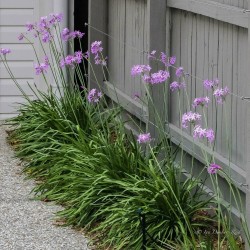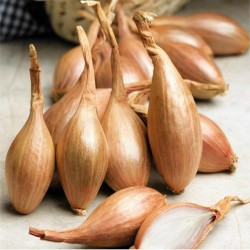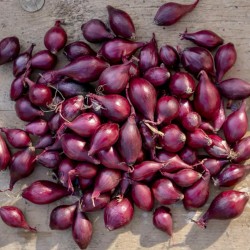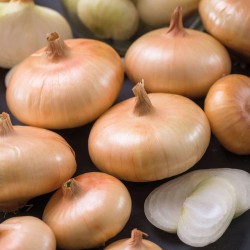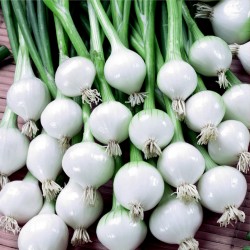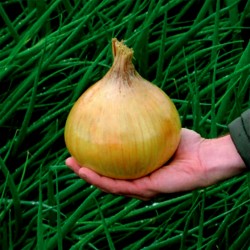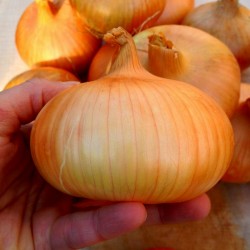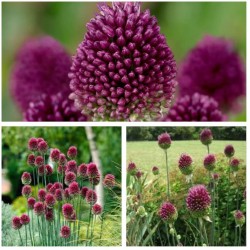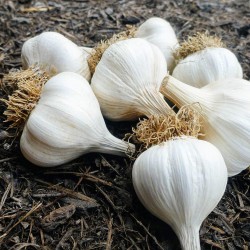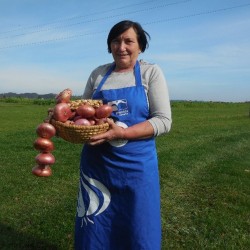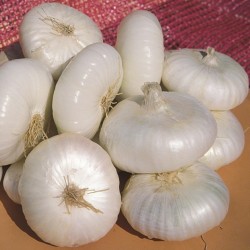Seeds Gallery Com,
5/
5
<!DOCTYPE html>
<html>
<head>
<meta http-equiv="Content-Type" content="text/html; charset=UTF-8" />
</head>
<body>
<h2><strong>Bośniackie ząbki czosnku „Bosanac”</strong></h2>
<h2><span style="color: #ff0000;"><strong>Cena za 5 ząbków czosnku.</strong></span></h2>
<p><span jsaction="agoMJf:PFBcW;usxOmf:aWLT7;jhKsnd:P7O7bd,F8DmGf;Q4AGo:Gm7gYd,qAKMYb;uFUCPb:pvnm0e,pfE8Hb,PFBcW;f56efd:dJXsye;EnoYf:KNzws,ZJsZZ,JgVSJc;zdMJQc:cCQNKb,ZJsZZ,zchEXc;Ytrrj:JJDvdc;tNR8yc:GeFvjb;oFN6Ye:hij5Wb" jscontroller="Zl5N8" jsmodel="SsMkhd" jsname="txFAF" class="JLqJ4b ChMk0b" data-language-for-alternatives="pl" data-language-to-translate-into="en" data-phrase-index="4" jsdata="uqLsIf;_;$708"><span jsaction="click:qtZ4nf,GFf3ac,tMZCfe; contextmenu:Nqw7Te,QP7LD; mouseout:Nqw7Te; mouseover:qtZ4nf,c2aHje" jsname="W297wb">Czosnek bośniacki może być mały (średnio jedna główka waży 10 gramów), ale jest niezastąpiony ze względu na smak i cierpkość.</span></span><span> </span><span jsaction="agoMJf:PFBcW;usxOmf:aWLT7;jhKsnd:P7O7bd,F8DmGf;Q4AGo:Gm7gYd,qAKMYb;uFUCPb:pvnm0e,pfE8Hb,PFBcW;f56efd:dJXsye;EnoYf:KNzws,ZJsZZ,JgVSJc;zdMJQc:cCQNKb,ZJsZZ,zchEXc;Ytrrj:JJDvdc;tNR8yc:GeFvjb;oFN6Ye:hij5Wb" jscontroller="Zl5N8" jsmodel="SsMkhd" jsname="txFAF" class="JLqJ4b ChMk0b" data-language-for-alternatives="pl" data-language-to-translate-into="en" data-phrase-index="5" jsdata="uqLsIf;_;$709"><span jsaction="click:qtZ4nf,GFf3ac,tMZCfe; contextmenu:Nqw7Te,QP7LD; mouseout:Nqw7Te; mouseover:qtZ4nf,c2aHje" jsname="W297wb">Obecnie tylko kilka rodzin nadal zna i posiada ten czosnek w Bośni i Hercegowinie.</span></span><span jsaction="agoMJf:PFBcW;usxOmf:aWLT7;jhKsnd:P7O7bd,F8DmGf;Q4AGo:Gm7gYd,qAKMYb;uFUCPb:pvnm0e,pfE8Hb,PFBcW;f56efd:dJXsye;EnoYf:KNzws,ZJsZZ,JgVSJc;zdMJQc:cCQNKb,ZJsZZ,zchEXc;Ytrrj:JJDvdc;tNR8yc:GeFvjb;oFN6Ye:hij5Wb" jscontroller="Zl5N8" jsmodel="SsMkhd" jsname="txFAF" class="JLqJ4b" data-language-for-alternatives="pl" data-language-to-translate-into="en" data-phrase-index="6" jsdata="uqLsIf;_;$710"><span jsaction="click:qtZ4nf,GFf3ac,tMZCfe; contextmenu:Nqw7Te,QP7LD; mouseout:Nqw7Te; mouseover:qtZ4nf,c2aHje" jsname="W297wb"> </span></span></p>
<p><span jsaction="agoMJf:PFBcW;usxOmf:aWLT7;jhKsnd:P7O7bd,F8DmGf;Q4AGo:Gm7gYd,qAKMYb;uFUCPb:pvnm0e,pfE8Hb,PFBcW;f56efd:dJXsye;EnoYf:KNzws,ZJsZZ,JgVSJc;zdMJQc:cCQNKb,ZJsZZ,zchEXc;Ytrrj:JJDvdc;tNR8yc:GeFvjb;oFN6Ye:hij5Wb" jscontroller="Zl5N8" jsmodel="SsMkhd" jsname="txFAF" class="JLqJ4b ChMk0b" data-language-for-alternatives="pl" data-language-to-translate-into="en" data-phrase-index="7" jsdata="uqLsIf;_;$711"><span jsaction="click:qtZ4nf,GFf3ac,tMZCfe; contextmenu:Nqw7Te,QP7LD; mouseout:Nqw7Te; mouseover:qtZ4nf,c2aHje" jsname="W297wb">Z punktu widzenia hodowcy jest to wysoka, ciemnozielona roślina, która bardzo dobrze przetrwa, zwykle rośnie zdrowo i wydaje się być nieco odporna na wiele chorób, które mogą mieć wpływ na czosnek.</span></span><span> </span></p>
<p><span jsaction="agoMJf:PFBcW;usxOmf:aWLT7;jhKsnd:P7O7bd,F8DmGf;Q4AGo:Gm7gYd,qAKMYb;uFUCPb:pvnm0e,pfE8Hb,PFBcW;f56efd:dJXsye;EnoYf:KNzws,ZJsZZ,JgVSJc;zdMJQc:cCQNKb,ZJsZZ,zchEXc;Ytrrj:JJDvdc;tNR8yc:GeFvjb;oFN6Ye:hij5Wb" jscontroller="Zl5N8" jsmodel="SsMkhd" jsname="txFAF" class="JLqJ4b ChMk0b" data-language-for-alternatives="pl" data-language-to-translate-into="en" data-phrase-index="8" jsdata="uqLsIf;_;$712"><span jsaction="click:qtZ4nf,GFf3ac,tMZCfe; contextmenu:Nqw7Te,QP7LD; mouseout:Nqw7Te; mouseover:qtZ4nf,c2aHje" jsname="W297wb">Pochodzi z Bośni i Hercegowiny, ale dobrze rośnie we wszystkich innych krajach.</span></span><span jsaction="agoMJf:PFBcW;usxOmf:aWLT7;jhKsnd:P7O7bd,F8DmGf;Q4AGo:Gm7gYd,qAKMYb;uFUCPb:pvnm0e,pfE8Hb,PFBcW;f56efd:dJXsye;EnoYf:KNzws,ZJsZZ,JgVSJc;zdMJQc:cCQNKb,ZJsZZ,zchEXc;Ytrrj:JJDvdc;tNR8yc:GeFvjb;oFN6Ye:hij5Wb" jscontroller="Zl5N8" jsmodel="SsMkhd" jsname="txFAF" class="JLqJ4b" data-language-for-alternatives="pl" data-language-to-translate-into="en" data-phrase-index="9" jsdata="uqLsIf;_;$713"><span jsaction="click:qtZ4nf,GFf3ac,tMZCfe; contextmenu:Nqw7Te,QP7LD; mouseout:Nqw7Te; mouseover:qtZ4nf,c2aHje" jsname="W297wb"> </span></span><span jsaction="agoMJf:PFBcW;usxOmf:aWLT7;jhKsnd:P7O7bd,F8DmGf;Q4AGo:Gm7gYd,qAKMYb;uFUCPb:pvnm0e,pfE8Hb,PFBcW;f56efd:dJXsye;EnoYf:KNzws,ZJsZZ,JgVSJc;zdMJQc:cCQNKb,ZJsZZ,zchEXc;Ytrrj:JJDvdc;tNR8yc:GeFvjb;oFN6Ye:hij5Wb" jscontroller="Zl5N8" jsmodel="SsMkhd" jsname="txFAF" class="JLqJ4b ChMk0b" data-language-for-alternatives="pl" data-language-to-translate-into="en" data-phrase-index="10" jsdata="uqLsIf;_;$714"><span jsaction="click:qtZ4nf,GFf3ac,tMZCfe; contextmenu:Nqw7Te,QP7LD; mouseout:Nqw7Te; mouseover:qtZ4nf,c2aHje" jsname="W297wb">Ci, którzy mają szczęście go posiadać, przesadzają go co roku, aby zachować tę wyjątkową odmianę czosnku.</span></span><span jsaction="agoMJf:PFBcW;usxOmf:aWLT7;jhKsnd:P7O7bd,F8DmGf;Q4AGo:Gm7gYd,qAKMYb;uFUCPb:pvnm0e,pfE8Hb,PFBcW;f56efd:dJXsye;EnoYf:KNzws,ZJsZZ,JgVSJc;zdMJQc:cCQNKb,ZJsZZ,zchEXc;Ytrrj:JJDvdc;tNR8yc:GeFvjb;oFN6Ye:hij5Wb" jscontroller="Zl5N8" jsmodel="SsMkhd" jsname="txFAF" class="JLqJ4b" data-language-for-alternatives="pl" data-language-to-translate-into="en" data-phrase-index="11" jsdata="uqLsIf;_;$715"><span jsaction="click:qtZ4nf,GFf3ac,tMZCfe; contextmenu:Nqw7Te,QP7LD; mouseout:Nqw7Te; mouseover:qtZ4nf,c2aHje" jsname="W297wb"> </span></span></p>
<p><span jsaction="agoMJf:PFBcW;usxOmf:aWLT7;jhKsnd:P7O7bd,F8DmGf;Q4AGo:Gm7gYd,qAKMYb;uFUCPb:pvnm0e,pfE8Hb,PFBcW;f56efd:dJXsye;EnoYf:KNzws,ZJsZZ,JgVSJc;zdMJQc:cCQNKb,ZJsZZ,zchEXc;Ytrrj:JJDvdc;tNR8yc:GeFvjb;oFN6Ye:hij5Wb" jscontroller="Zl5N8" jsmodel="SsMkhd" jsname="txFAF" class="JLqJ4b ChMk0b" data-language-for-alternatives="pl" data-language-to-translate-into="en" data-phrase-index="12" jsdata="uqLsIf;_;$716"><span jsaction="click:qtZ4nf,GFf3ac,tMZCfe; contextmenu:Nqw7Te,QP7LD; mouseout:Nqw7Te; mouseover:qtZ4nf,c2aHje" jsname="W297wb">Co ciekawe, chociaż jest wyjątkowo ostry i ma niezwykle silny aromat, to nadal nie pachnie brzydko z oddechem, jak inne odmiany.</span></span><span jsaction="agoMJf:PFBcW;usxOmf:aWLT7;jhKsnd:P7O7bd,F8DmGf;Q4AGo:Gm7gYd,qAKMYb;uFUCPb:pvnm0e,pfE8Hb,PFBcW;f56efd:dJXsye;EnoYf:KNzws,ZJsZZ,JgVSJc;zdMJQc:cCQNKb,ZJsZZ,zchEXc;Ytrrj:JJDvdc;tNR8yc:GeFvjb;oFN6Ye:hij5Wb" jscontroller="Zl5N8" jsmodel="SsMkhd" jsname="txFAF" class="JLqJ4b" data-language-for-alternatives="pl" data-language-to-translate-into="en" data-phrase-index="13" jsdata="uqLsIf;_;$717"><span jsaction="click:qtZ4nf,GFf3ac,tMZCfe; contextmenu:Nqw7Te,QP7LD; mouseout:Nqw7Te; mouseover:qtZ4nf,c2aHje" jsname="W297wb"> </span></span></p>
<p><span jsaction="agoMJf:PFBcW;usxOmf:aWLT7;jhKsnd:P7O7bd,F8DmGf;Q4AGo:Gm7gYd,qAKMYb;uFUCPb:pvnm0e,pfE8Hb,PFBcW;f56efd:dJXsye;EnoYf:KNzws,ZJsZZ,JgVSJc;zdMJQc:cCQNKb,ZJsZZ,zchEXc;Ytrrj:JJDvdc;tNR8yc:GeFvjb;oFN6Ye:hij5Wb" jscontroller="Zl5N8" jsmodel="SsMkhd" jsname="txFAF" class="JLqJ4b ChMk0b" data-language-for-alternatives="pl" data-language-to-translate-into="en" data-phrase-index="14" jsdata="uqLsIf;_;$718"><span jsaction="click:qtZ4nf,GFf3ac,tMZCfe; contextmenu:Nqw7Te,QP7LD; mouseout:Nqw7Te; mouseover:qtZ4nf,c2aHje" jsname="W297wb">Z całego serca polecamy tę odmianę czosnku i jesteśmy pewni, że będziesz zachwycony tak samo jak my!</span></span></p>
</body>
</html>
VE 229




